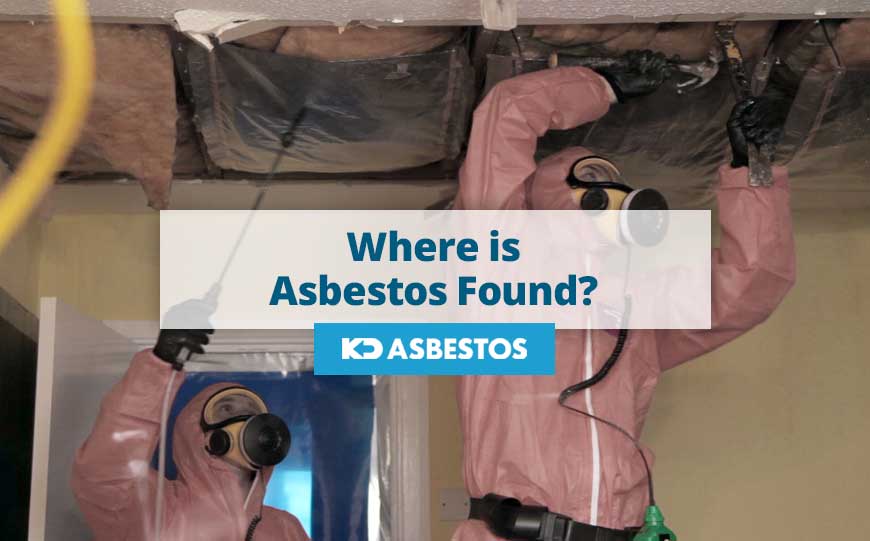
Asbestos can be found in various properties, particularly those which were either built or refurbished prior to the year 2000.
Unfortunately at that time, asbestos was widely used in various products and materials as we shall be discussing in more detail herein.
Table of Contents
Sprayed Coatings
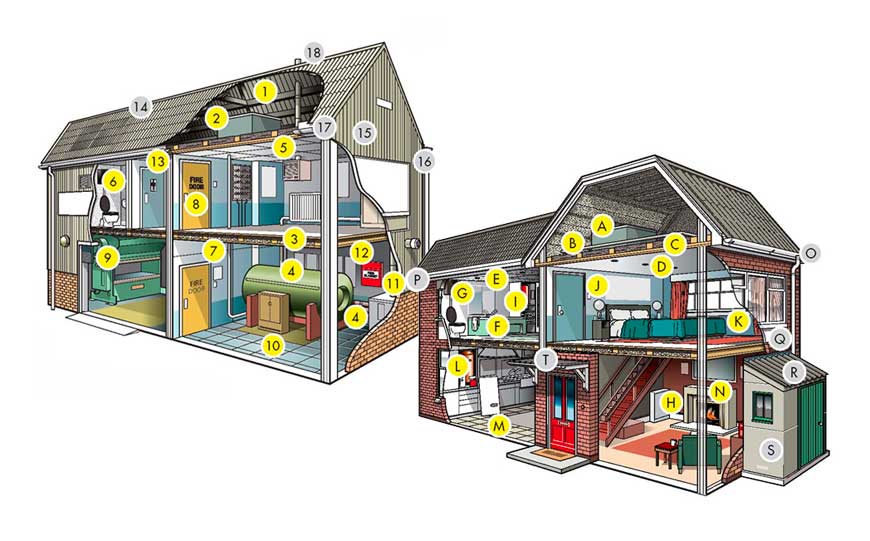
Image credit: HSE
Some sprayed coatings, such as those on steel work or on the underside of roofs, may contain asbestos.
These coatings are generally intended for fire protection.
Such spray coatings generally look rather rough, and the colour is often either grey or white, although it might have been painted over.
Sprayed coatings are considerably dangerous as they may contain up to 85% asbestos.
Moreover, it could break up very easily, even with a minor disturbance.
Textured Decorative Coatings
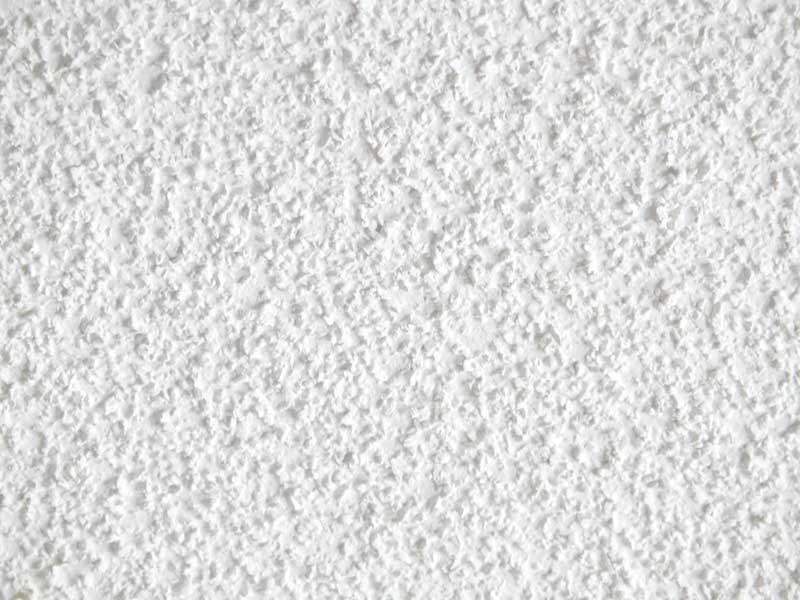
Textured decorative coatings were quite popular in the past.
These decorative finishes applied to walls or ceilings might contain asbestos fibres.
It is not that easy to notice them since it depends on the particular finish, and while they are generally white in colour, they could have been painted over.
Asbestos Cement Water Tank
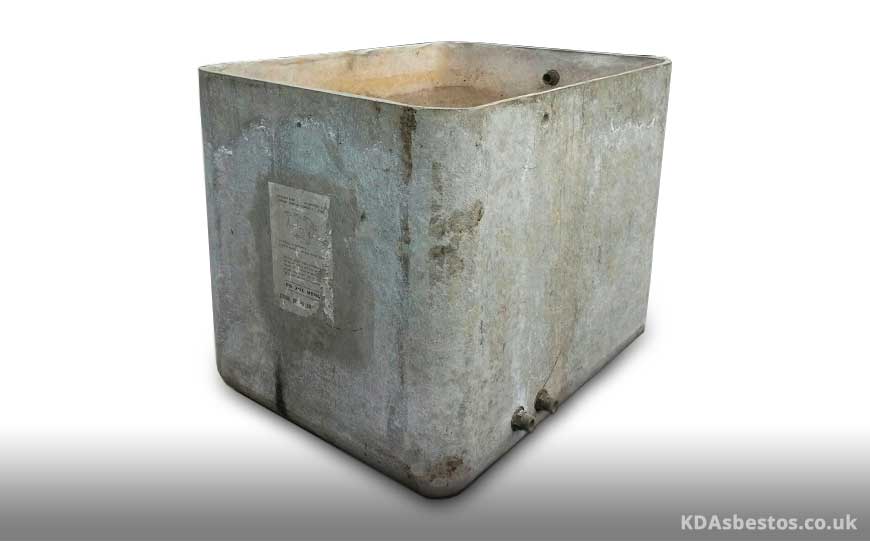
Asbestos cement used to be used to manufacture water tanks.
Many of these tanks can still be found in loft spaces in UK homes.
Asbestos Cement Roofing
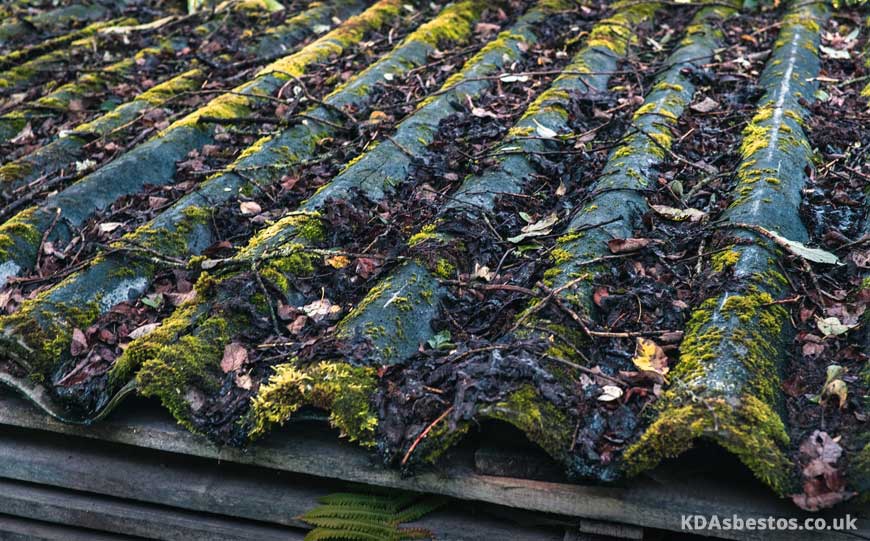
Asbestos cement roofs, made from large sheets of corrugated asbestos cement, were often used in industrial buildings.
Sometimes they can also be found on garage and shed roofs.
Often such roofs are covered in moss, as they would have been installed several years ago when this practice was common.
Hence, great care needs to be taken to verify whether asbestos may be present in such roofing.
Asbestos Cement Gutters & Downpipes
Gutters and downpipes made from asbestos cement were quite common several years ago.
These can typically be found attached to cement roofs of warehouses and other similar buildings.
Asbestos Cement Flues
Asbestos cement flues can be found in boiler systems of industrial as well as domestic places.
These can also be present in air conditioning and ventilation systems.
Loose Fill insulation
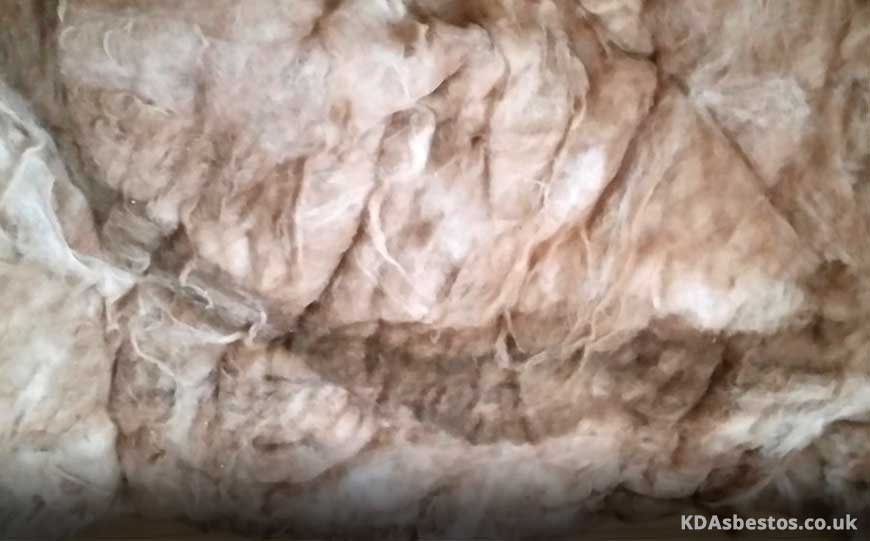
Often found in cavity walls, roof spaces or under flooring, loose-fill insulation appears rather loose and fluffy.
It is generally white or with a blue-greyish colour.
Pipe Lagging
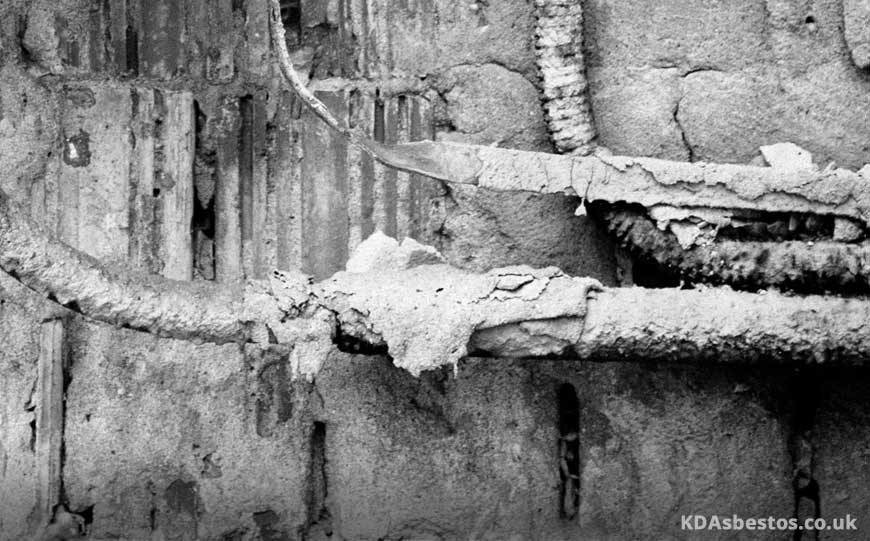
Pipe lagging, especially those in or on heating systems, may contain asbestos.
It was commonly used around boilers or calorifiers, as well as around pipework.
Unfortunately this type of asbestos has various appearances.
Generally though it is a fibrous material which can easily turn into flakes or even powder.
Moreover it is important to point out that sometimes this could have been covered up by protective coating or paint, making it more difficult to identify.
This is in fact considered to be one of the most dangerous asbestos containing materials.
It is important to make sure that it is not disturbed, especially until it has been confirmed whether asbestos fibres are present or not.
Asbestos Insulating Board (AIB)
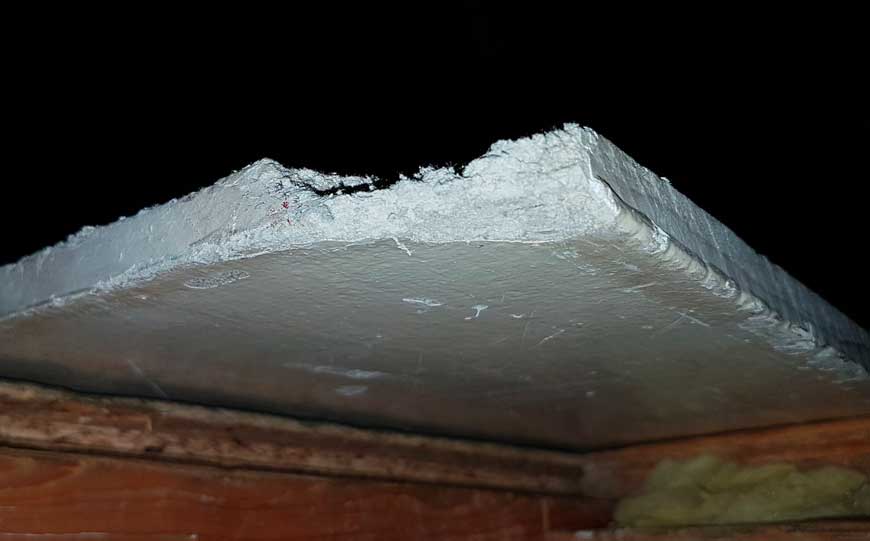
Image credit: Asbestos Audit
Asbestos insulating board, or AIB, was very commonly used to act as a fireproofing material.
It was utilised in various ways and applications, such as partition walls, soffits, ceiling tiles and panels underneath windows.
AIB boards are quite large, usually square or rectangle, and they were commonly worked into masonry.
Unfortunately it is quite difficult to tell the difference between items made from AIB and non-asbestos materials.
It is therefore important to identify it and remove it properly prior to commencing any renovation works.
AIB can look like polystyrene or general plaster at first glance.
Taking a sample to verify whether it is actually AIB or otherwise is important as once it is disturbed or damaged, the asbestos fibres can easily become airborne and be very hazardous.
In the 1980’s, the use of AIB declined considerably since it was at that time that it was becoming increasingly known how dangerous asbestos was.
However, unfortunately many buildings in the UK already had AIB used in various ways as it was considered to be a material that was advantageous in construction due to its properties.
AIB Partition Walls
AIB partition walls used to be quite popular several years ago.
It is important to be careful and make sure that you seek professional assistance to verify whether your partition walls are made from AIB.
Some partition walls may be made from plasterboard, while others may contain asbestos, and it is not easily discernible by sight.
Taking out the door frames could easily uncover asbestos which was often used behind the timber.
AIB Interior Window Panels
AIB interior window panels are another possibility of asbestos containing material.
Unfortunately such window panels were often made from AIB prior to the year 2000, and so if your property was built or refurbished prior to 2000 you should be careful.
AIB Fire Doors
Asbestos insulating board was widely used to make fire doors due to the fact that it was ideal for insulation against fire and heat.
Fireproofing panels in fire doors were often made from AIB as they could effectively keep heat in as well as create a fire barrier.
This was a particularly common practice back in the 1960s and 1970s, although AIB was still being used until 2000.
AIB generally contains amosite and/or chrysotile asbestos.
AIB can contain a high quantity of asbestos, amounting to around 45%.
So it is critical to avoid disturbing it before making sure whether asbestos is present.
AIB Ceiling Tiles
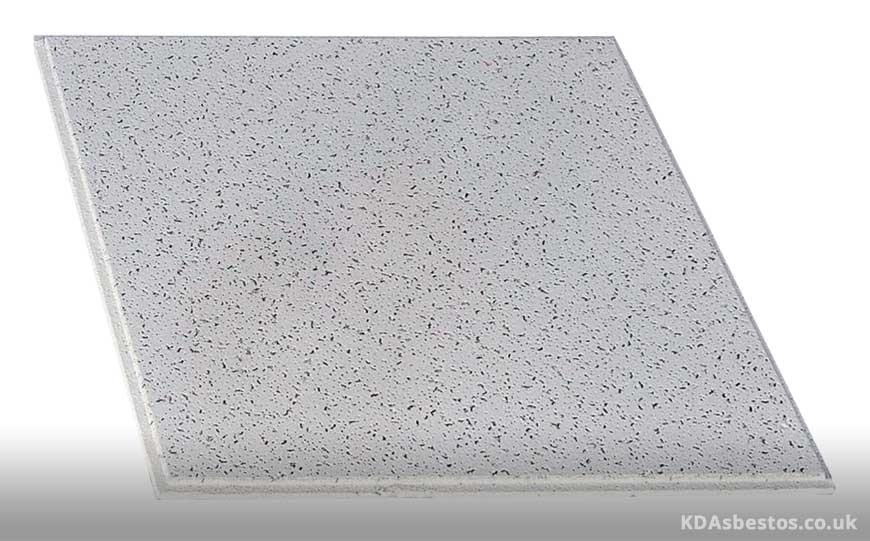
AIB ceiling tiles need to be handled with great care.
If you have any tiles that are crumbling, or if you are planning a renovation, it is important to have such tiles tested beforehand by a qualified person.
Asbestos was a common ingredient that used to be added to mastic adhesives that were used to install ceiling tiles too.
It could also be found in the backing of the tiles, or in the tile body.
Some ceiling tiles were also used in suspended ceilings, and in such cases there could be considerable amounts of asbestos-containing dust and debris on the hidden upper part of the tiles
Ceilings of boiler rooms and similar buildings also used to be covered with cement-asbestos products to act as a fire barrier.
AIB Bath Panels
Bath panels used to be made from AIB too.
Such panels helped to create a clean-cut finish as well as coverup any pipework.
If your bath panels were installed prior to the year 2000 it is important to check whether they may be AIB bath panels as they used to be quite popular back then.
Such bath panels should not be damaged or removed before as asbestos fibres could become airborne if they are tampered with.
Toilet Seat & Cistern
Asbestos composites such as toilet seats and cisterns also need to be handled with great care.
Asbestos was often used back then in order to reinforce the materials that toilet seats and cisterns were made from.
Generally toilet seats and cisterns contain chrysotile asbestos, which was bonded with the resin.
As long as they are still in good condition there is no need to worry.
But in case they are damaged or are going to be removed, it is important to consult with a professional regarding testing and proper removal and disposal.
Rope Seals & Gaskets
Asbestos rope seals and gaskets can be commonly found in both gas or electric heating appliances.
Should you notice any significant deterioration, it is important to have a licensed person conduct a test, as substantial breakage could lead to asbestos fibres being inhaled.
Floor Tiles
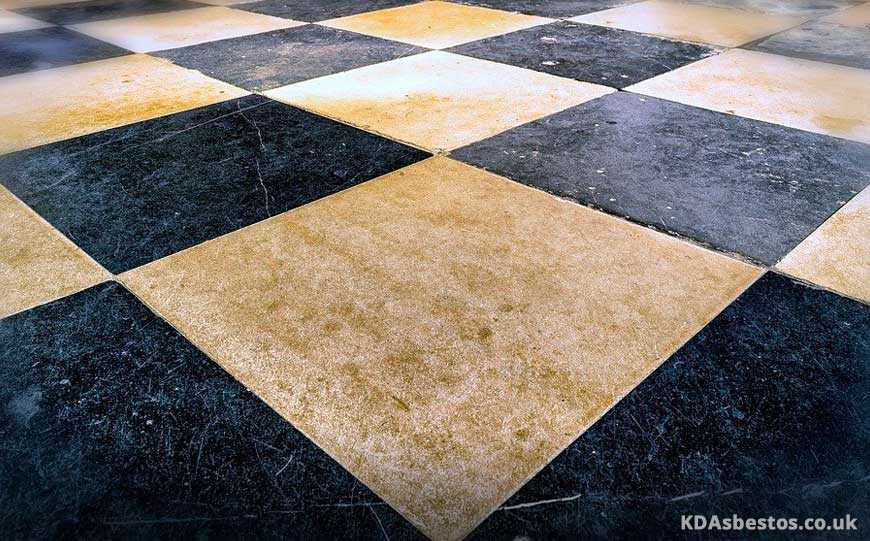
Asbestos floor tiles were commonly used in the past.
You often still find asbestos floor tiles in certain older buildings.
Such floor tiles should be tested as you cannot easily tell whether asbestos is present or not.
In many cases they are very similar to modern vinyl floor tiles.
If the tiles look damaged, it is critical to seek expert advice for testing.
This should also be carried out in case you’re going to disturb them in any way, such as to remove them or prior to demolishing.
Any actions that could cause the tiles to crumble or break, such as drilling, sawing or sanding, should be avoided as if asbestos is present the fibres will become airborne.
Apart from taking into consideration the age of the floor tiles or the property itself, you should also be aware that floor tiles that are 9, 12 or 18 inch squares are the most common types of asbestos floor tiles.
Roofing Felt
Asbestos roofing felt was commonly used on outbuildings and many garage roofs back in the day.
It is a type of fabric which is made from textile fibres which are compressed and heated so as to mat together.
Asbestos felt was commonly used as an underlayment for floors as well as for roofs.
If you notice any roofing felt that is in a bad condition, it is advisable to have it tested before handling it in any way.
Sadly, many tradesmen suffered from toxic exposure due to having worked with asbestos felt, and its toxicity level is very high.
Moreover, it is a very friable material, which makes things even more hazardous.
In fact the asbestos content is said to be around 85%.
Textiles
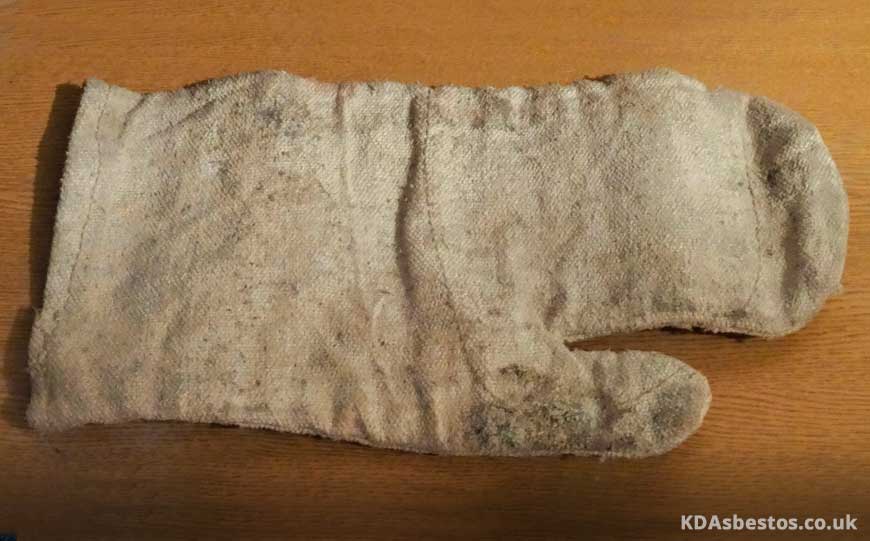
Textiles can be found in various forms, including fire blankets, heat resistant gloves and other protective clothing, fire curtains, canvas, ropes, pipe coverings, electrical cloths and in fuse boxes.
The mineral was very popular due to its strength as well as for its heat resistance.
The quantity of asbestos fibres which are found within asbestos textile products varies considerably, but on average it is between 70% and 80%.
Chrysolite was the most popular type of asbestos used in textiles as it was easy to spin and weave it into the fabric due to its fibrous nature.
If asbestos cloth is cut, asbestos fibres are released into the air.
One can only imagine the high levels of exposure that textile mill workers underwent.
Soffits
Soffits were commonly made from AIB or asbestos cement.
If the property was built before 1980, and there are any soffits and fascias it is best to be careful and have them tested as they could easily contain asbestos.
These were usually made from vinyl or fibreglass and then covered with a textured finish.
The colours are usually white, but they could also be light brown or grey.
In many cases they have a rather brittle texture and can crumble easily when touched.
Behind Fuse Boxes
Old fuse boards could contain asbestos.
This is because chrysolite used to be woven into asbestos rope that used to be used in older re-wireable type fuse boards.
The function of the asbestos rope was to absorb and extinguish any flashes in a safe way since it is a non-flammable and absorbent material.
Behind Fireplace
Asbestos thermal boards were often placed behind and around fireplaces.
An old fireplace chimney could contain asbestos boards or pads in the insulation linings or below the mantel.
Also, firebricks and their mortar could also contain asbestos.
If the fireplace is an old one in an old building, the probability that asbestos is present is even higher.
Back in the day asbestos was considered to be an exceptional material as it offered considerable strengthening as well as being ideal for fireproofing.
Boiler Insulation
Since asbestos was used for fire protection on steel it was often considered to be the best option for boiler insulation.
This type of asbestos has varying appearances but it is generally fibrous and flaky.
Conclusion
As you can see asbestos could be present in a wide variety of materials.
It is important to be cautious and never cut, drill, sand, saw, scrub or perform any action that could potentially lead to asbestos fibres being released in the air.
Unless you are completely sure that the material is safe, do not risk it as asbestos is very dangerous.
Besides, since most materials are not going to be recognisable as containing asbestos or not, the rule is always to make sure by getting a sample of the material tested properly in a lab conducted after a professional asbestos survey.
Seeking assistance from a licensed asbestos removal professional is the best option in such cases.